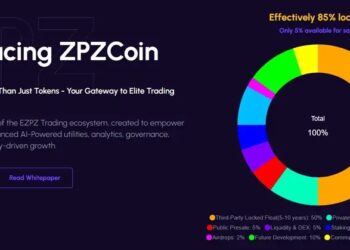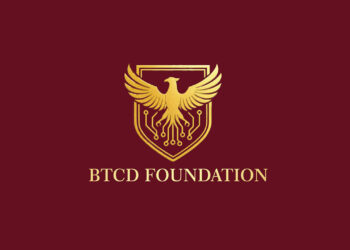Introduction to the Middle East’s Economic Landscape
Its unlimited pool of resources and culture make the Middle East the pivotal region upon which the global economic architecture is laid. The vast pools of oil and grandiose landscape of commerce – over generations, the world has known the Middle East to be the place where ancestors share their businesses and heritage.
In short, the Middle East is easily the forefathers of the energy marker and one of the prolific contributors to the formation and expression of economic policy around the world. The socioeconomic framework of the Middle East is also an economic entity bustling with capital. The political capital is unparalleled, and the intentions to try and fashion their own way of diversifying the economy seem zealous.
The insatiable urge and the desire to be ahead of time – the Middle East is far on its way from traditional western legacies as oil states or gas states. It naturally makes them the future where economic behemoths of most of the last century merge with today’s postindustrial societies and social nodes.
Oil and Gas: The Lifeblood of the Global Economy
Middle Eastern is a behemoth in the global energy and oil and gas perspective. For many years, their vast and wholly varied reserves of oil and gas have powered industries and wheels in all the other continents. However, nations like Saudi Arabia, the UAE, and Qatar have not just long exploited these resources but rather the hydrocarbon abundance to become a giant in the global playfield.
These modestly sized countries now dominate essential global facets such as oil and energy policy. The Organization of the petroleum exporting countries notably play a significant role in this case as they control significant parts of its production and supply. For example, over eight in ten out of the OPEC-centric nations are from the Middle East and play an essential role in global oil availability.
Unfortunately, this means that any movement in OPEC significantly alters the pricing, and hence their lasting power in the world. This shows how central the countries in the ME are and significantly increases their geopolitical power.
Investment Inflows: Attracting Global Capital
Nowadays, the Middle East transmutes into a fire magnet for global capital. The type of investments is diverse concerning the regions; it includes real estate investments, technology, and investments in the financial sector.
Additionally, these are the vehicles for this capital, primarily the sovereign wealth funds of Saudi Arabia and the United Arab Emirates. The funds of these countries have concentrated in them become significant players in international finance but do not just hold anything – they hold sizeable shareholdings in various global companies and the depositary receipts of prominent property.
Hence, the Middle East is not just capable of expanding its influence on global finance but consolidating the sovereign power in the economic sphere, inspiring different kinds of movements that extend well beyond its limits.
Technological Advancements and Innovations
With such bold steps from following the traditional oil economy, today, the Middle East is confidently looking into the future. Large investments and expectations are riding on technology and innovation.
A clear example of such a project is the Saudi Arabian NEOM project, created as a flash city of the future in the country’s northwestern Tabuk Province on the border with Jordan. This project is not only an economic jump forward but also a significant change in the direction of the further development of some new industries such as biotechnology and robotics, artificial intelligence programs.
The Middle East has already shown its attitude that it is ready to use new industries based on technology to create a new economic environment throughout the region.
Impact of Political Stability on Economic Performance
Perhaps, the most crucial element of the two core concepts to consider is how political stability and economic performance are interrelated in the Middle East. On the one hand, it is a complicated tapestry. In various areas, stability equals growth or vice versa is almost synonymous with its polar opposite.
The UAE is especially notable here. The Emirate’s form of governance is centralized and stable — in line with it, the economy booms and financial performance soars. As a result, the UAE can both sponsor growth and attract investments. On the other hand, countries like Syria or Yemen and warfare-caught battlefields see their economy hit rock bottom.
From oil spots to foreign investments, it is evident that products and services produced by conflict nations have nowhere to go but downhill. The contrast between the two states of existence reveals how governance can facilitate the transition to a golden prize or pour water over it.
This binary is essential for grasping the broader economic currents of the Middle East.
Tourism as an Economic Booster
However, in the Middle East, tourism is not only a pastime but also its economically important part. Such states as the UAE, Qatar, and Oman are tightening their belts to radically change their appearance into a luxurious tourist destination.
Events such as the skyscrapers of Dubai in the UAE or prominent shopping festivals or the recent FIFA World Cup in Qatar dramatically increase the number of international visitors. Not only does this enhance the country’s prestige on a global scale, but it also generates a significant amount of money due to living in hotels, shopping, and other tourist services.
As the activity increases, the service sector increasingly demands different services and goods, creating new jobs and opportunities. Hence, even the oil-reliant region can offer another source of income.
Labor Markets and Expat Contributions
Despite that, the Middle East’s economy is thriving today due to the expatriate workforce efforts and remittances, the flow of expatriates and remittances are essential to the regional economy. In the UAE and Saudi Arabia, for instance, expatriates are indispensable within every industry from construction to healthcare and education, and a large fraction of their earnings is remitted to home.
It replenishes area labor needs, but it has resulted in a disproportionate distribution of job opportunities between expatriates and citizens. Saudi Arabia’s strategic exercise, the Saudization program, for one, focuses on ways to increase the share of Saudis employed in different areas.
Therefore, regional economics can differentiate the necessity of leveraging expatriate workers and coordinating with local growth.
Sustainable Energy Initiatives
As the world shifts to sustainability, the Middle East has taken its efforts to define the energy sector in the region. In the last four years, the region has boasted of some of the world’s largest solar and wind energy projects, transforming from an economy whose history was entrenched on oil-rich narratives to a region with a sustainable future.
Countries such as Saudi Arabia and the UAE have pioneered unimaginable efforts with billion-dollar investments in some of the largest solar parks and wind farms, cutting down significantly on carbon footprints and establishing a new industry, creating thousands of job opportunities. The projects are fundamentally significant because, placing the Middle East at the helm of the transition, the world supports the transition to ensure that the Middle East is a player even when the world moves away from fossil fuels.
The effort and commitment to sustainable energy show a proactive role in helping protect the environment and support the resilience of an environmental future.
Middle East’s Trade Relationships
Trade is the lifeblood of the Middle East’s well-being, and that it is the natural competitive advantage of the Middle East based on its geopolitical space between Europe, Asia, and Africa. As a result, countries in the region create complex chains of trade connections at all levels necessary to ensure a strong economic performance.
The region in which the Suez Canal and the world’s largest logistics facilities in Dubai, Oman, and many others, are truly a global hub. The global influence of the Middle East is supported by trade agreements that bind it into the world’s biggest economy.
Middle Eastern Treaty with China and the EU creates an essential economic connection and gives the region geopolitical significance. Medium trade patterns are essential for the economies’ participation in the industrial and dependence on oil and the need to inform new markets for a vast range of goods and services.
Future Outlook: Economic Predictions and Trends
In sum, the Middle East is at a crossroads composed of both potential and challenges. Proactive investments into technology and sustainable energy, proactive connections with the world’s major economic communities, and broad opportunities for international trade create sufficient prerequisites for expanding global influence.
At the same time, the pathway is filled with numerous obstacles such as political turbulence and a need to restructure the economies from oil dependence. Therefore, the experts expect that the future economic landscape of the region will greatly depend on its ability to innovate and become integrated into the world’s digital economy, as well as to manage its socio-political development.
The region’s focus on fintech, green energy, as well as advanced manufacturing, will boost the economy, but the overall outcomes will mostly depend on the stability of the Middle Eastern region and the dynamics of the global economy.



















